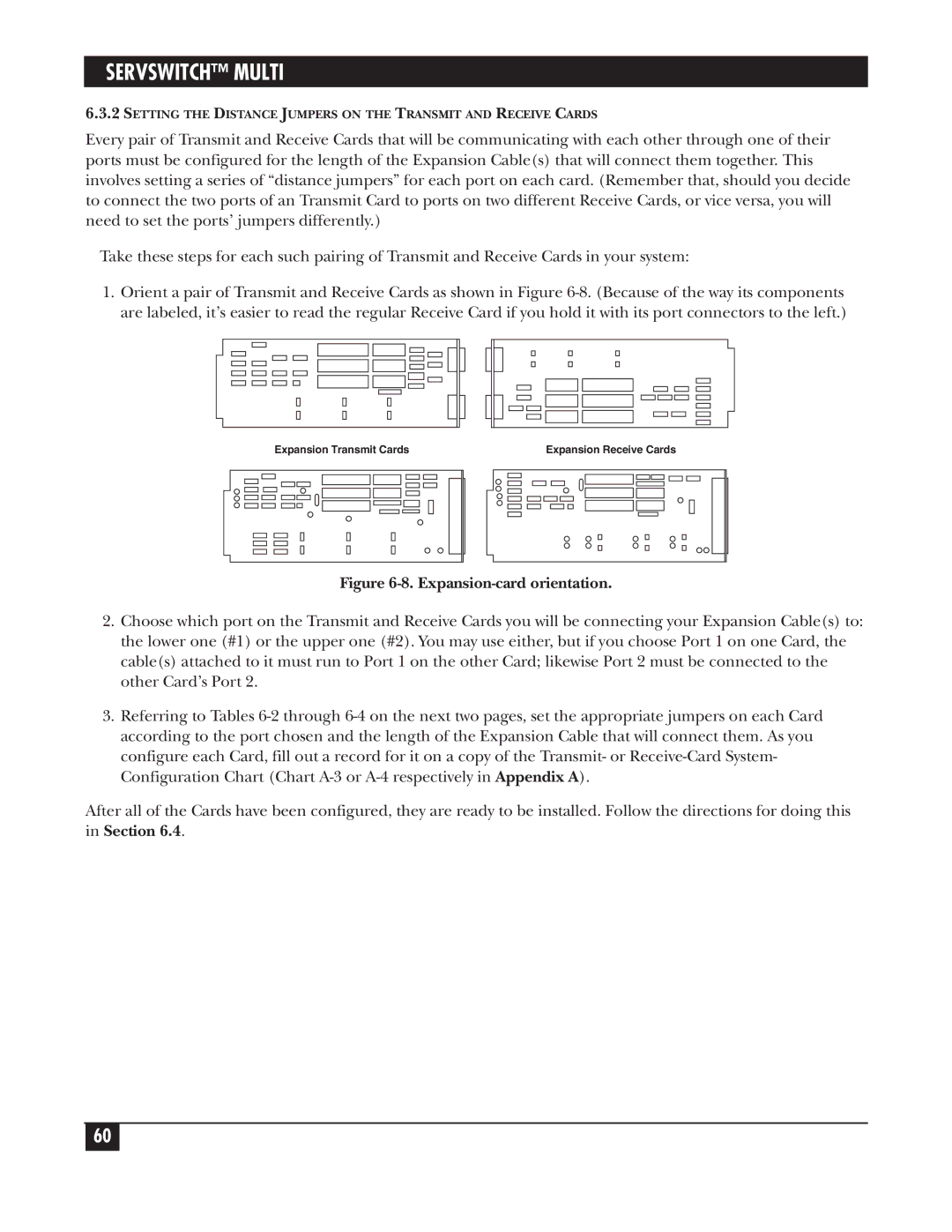
SERVSWITCH™ MULTI
6.3.2SETTING THE DISTANCE JUMPERS ON THE TRANSMIT AND RECEIVE CARDS
Every pair of Transmit and Receive Cards that will be communicating with each other through one of their ports must be configured for the length of the Expansion Cable(s) that will connect them together. This involves setting a series of “distance jumpers” for each port on each card. (Remember that, should you decide to connect the two ports of an Transmit Card to ports on two different Receive Cards, or vice versa, you will need to set the ports’ jumpers differently.)
Take these steps for each such pairing of Transmit and Receive Cards in your system:
1.Orient a pair of Transmit and Receive Cards as shown in Figure
Expansion Transmit Cards | Expansion Receive Cards |
Figure 6-8. Expansion-card orientation.
2.Choose which port on the Transmit and Receive Cards you will be connecting your Expansion Cable(s) to: the lower one (#1) or the upper one (#2). You may use either, but if you choose Port 1 on one Card, the cable(s) attached to it must run to Port 1 on the other Card; likewise Port 2 must be connected to the other Card’s Port 2.
3.Referring to Tables
After all of the Cards have been configured, they are ready to be installed. Follow the directions for doing this in Section 6.4.
60
